Gallipoli tour report 2022
“One of the best ever!”
The “Hidden Gallipoli” Tour – May 2022
by Thomas Iredale
Once again, the tour in May 2022 was superbly organised by Clive Harris of Battle Honours Ltd, which this time combined two elements: the “Classical” and the “Hidden Gallipoli” tours, where each participant could choose ad hoc which one to join. Tacked on the end, was a two-day extension in Istanbul. This report covers only the “Hidden Gallipoli” element and the Istanbul extension.
On Monday, 9 May, the programme began under the leadership of GA Historian, Stephen Chambers and accompanying us throughout was Adem Bicer, our expert Turkish battlefield guide.
Following the traditional ferryboat ride from Çanakkale to Kilidbahr, we made our way to the French sector via Abide, the imposing Turkish memorial, looking superb in the morning sunlight. From this vantage point above Morto Bay, which stretches right round to Seddulbahr, we studied the landing challenges and fate of the 2nd Battalion of the South Wales Borderers.
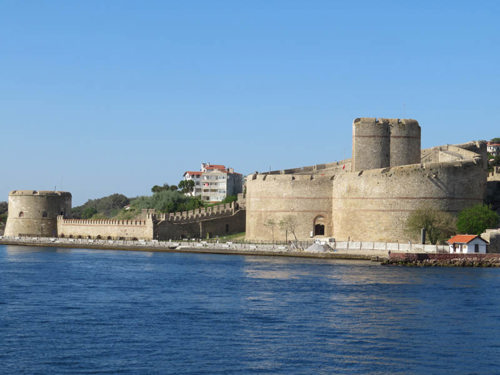
1. Kilidbahr Fort
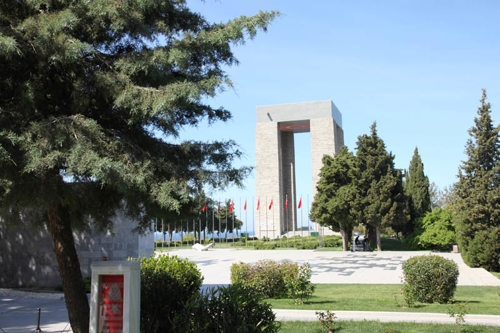
2. Abide memorial
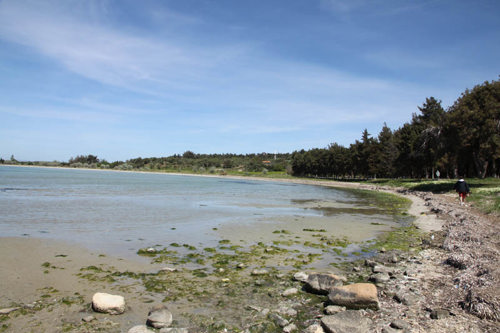
3. Morto Bay
We then moved on to the French Cemetery in which the fallen of the Corps Expéditionnaire d’Orient are commemorated, noting that the French officers were buried separately from the men. We also looked at the 17 new graves for the remains recently discovered during renovation work at Seddulbahr Castle. Next Stephen showed us one of the early French memorials near Zimmerman’s Farm, standing forlorn in overgrown pine woods, stripped of its inscription. We then walked up the line, along the crest of the ridge (accompanied by a very strong wind, so we had to hold on to our hats), to find the formidable Bouchet, Haricot and Quadrilateral redoubts. Here we examined the French trenches, with their stone work and could see first-hand how the Poilus were exposed to artillery fire from In Tepe, across the straits.
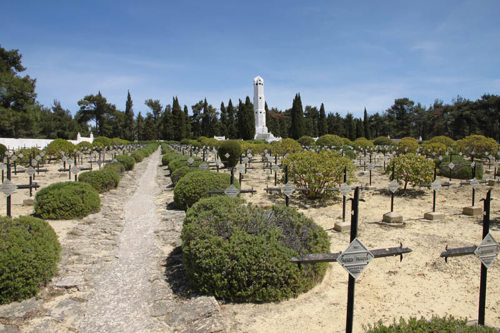
4. French Cemetery
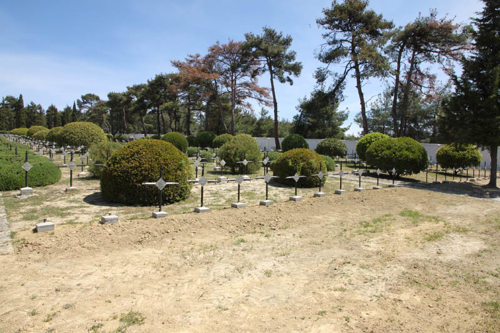
5. 17 newly-interred French graves
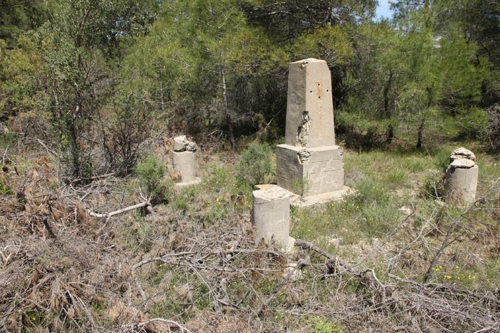
6. Old French memorial
After lunch our walk charted the front line from June 1915 through to the withdrawal. At Skew Bridge, we paused to commemorate, amongst others, Assistant Paymaster Harry Biles of the RND. Walking alongside the Krithia road, we saw the remains of several trenches, including the ones which we believe may have been part of Backhouse Post. A quick visit to the grave location of Captain H Hargreaves Bolton (near Romano’s) noticing the trees in the copse around the former grave have sadly been cut down, literally devasting the hitherto peaceful location.
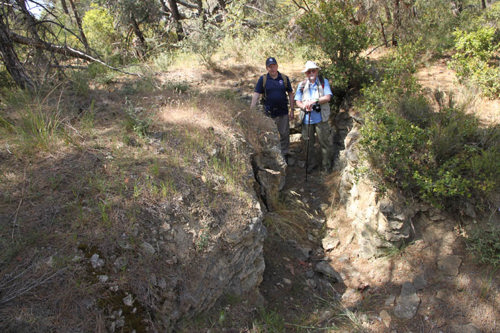
7. Deep stone trench in the RND sector
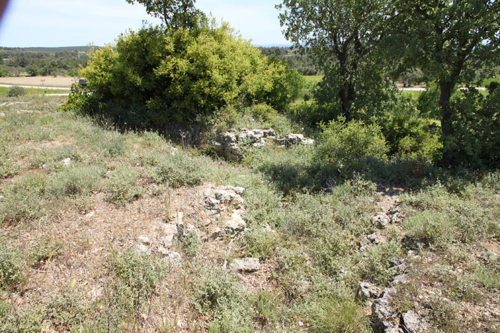
8. Stone trenches in the French sector
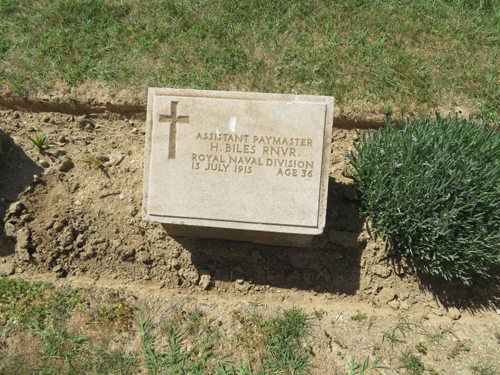
9. Marker for Paymaster H. Biles
Next up, we explored the Redoubt and Vineyard areas, and followed the locations held by the 29th, 42nd (East Lancs), 52nd (Lowland) and Royal Naval Divisions during the campaign. Unfortunately, recent rain had filled the Krithia Nullah, so we could not cross and head for Twelve Tree Copse, but had to re-trace our steps back to the Krithia road. Here the coach picked us up and headed to the ferry terminal for the return trip – and a welcome Efes at the 'Yali Hani' where we met up with the group on the regular battlefield tour.
The second day (10 May) began with a gentle stroll from the Grand Anzac Hotel to the Naval Museum in Çanakkale. Unfortunately, the legendary mine-layer ship the 'Nusret', was being exhibited at another location, so we could not go on board. The Naval Museum has had a major work-over during the last couple of years and there are new exhibition halls in the Çimenlik Fort itself. The park with its exhibits of cannon, torpedoes and the remains of UB-46 seem to have remained unchanged. It is a pity that visitors are not allowed up to battlements for a look over the Narrows. The bookshop has some interesting titles and next door to it, a pleasant café with outside seating.
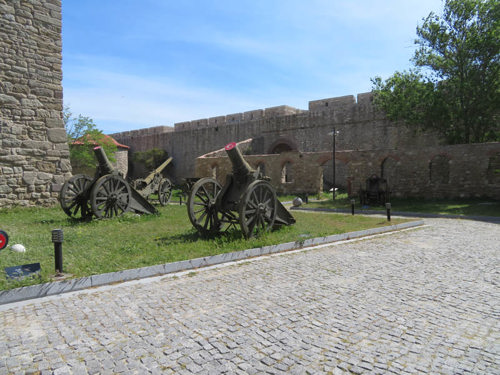
10. Inside Çimenlik castle
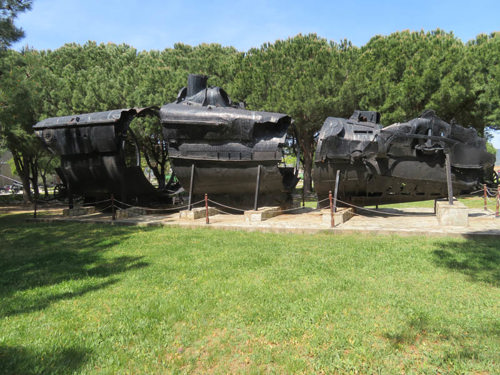
11. Remains of UB-46
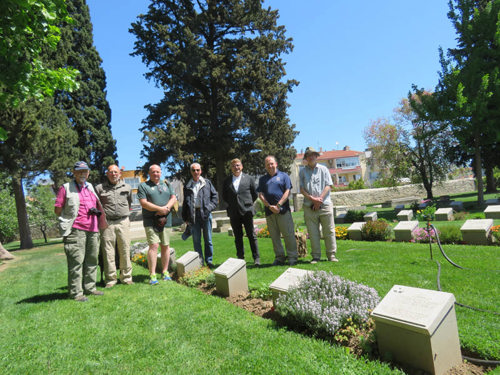
12. Consular cemetery
We then went by coach to the CWGC Consular Cemetery in the outer suburbs of Çanakkale: an island of tranquillity in this otherwise bustling university town. Lusciously green and beautifully kept by the CWGC, their Country Manager, Mr. Burak Gundoğan, conducted us around pointing out some graves of interest. These included an early Gallipoli veteran, Corporal George Bull, buried here in 1854, and the Calverts, a family who provided consuls, were involved in the Troy excavations and in espionage during WWI. Stephen then told us about the cemetery’s links to submariners, spies and stories of tragedies that befell some early battlefield pilgrims.
On the coach again, we picked up the highway to Izmir, stopping for a very pleasant lunch, at the invitation of the owner, at the Tusan Hotel at Güzelali, on the coast road to Kum Kale. Thereafter, we drove up a winding mountainside to inspect the massive 280mm L/35 'Turgut Reis' cannon. Fired in anger during the 1915 campaign whilst still aboard ship, these two low-profile turrets were unshipped and emplaced on the hillside during a 1930's upgrading of the Dardanelles' defences.
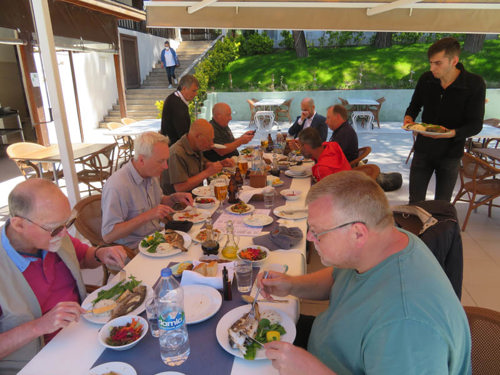
13. Lunch at Tusan Hotel
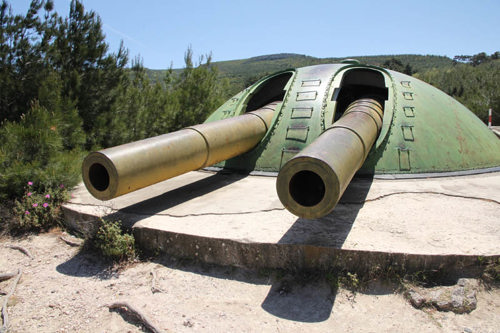
14. Turgut Reis battery
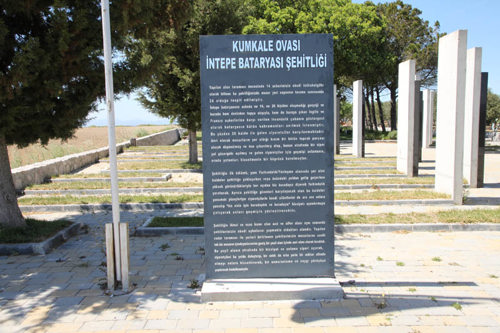
15. In Tepe artillery memorial
On to our next destination, we stopped briefly at the In Tepe Batteries’ memorial, with some artillery relics on display. Then continuing along the coast road, we came to the fort at Kum Kale itself. Although we could not enter (restricted military installation), we saw and marvelled at how close Seddulbahr was, across the mouth of the Dardanelles. Small wonder that Hamilton wanted no Turkish presence there during the Allied landings, and for which task the French 6th Colonials were detailed. From there to the Turkish cemetery on the higher ground, with its commanding view of the lower terrain right up to the fort at Kum Kale where the French landed. Stephen gave a comprehensive the rundown of the 48 hours of heavy fighting, until the successful French withdrawal during the night of 26/27 April 1915.
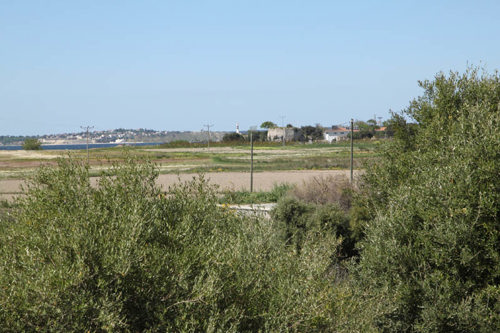
16. View from Kum Kale cemetery
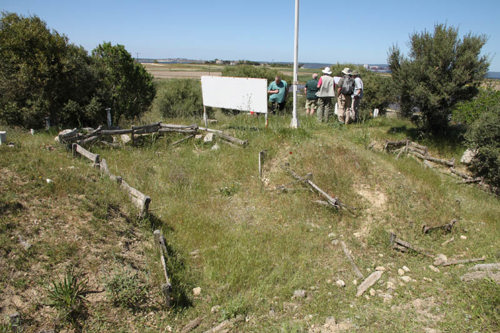
17. Trenches in Kum Kale cemetery
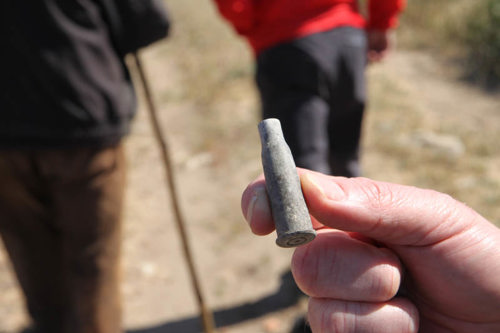
18. Lebel cartridge Kum Kale
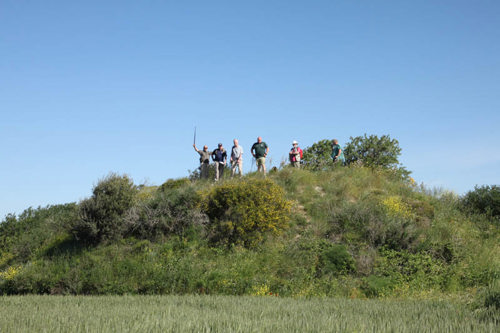
19. Group on Patroclus’ Mound
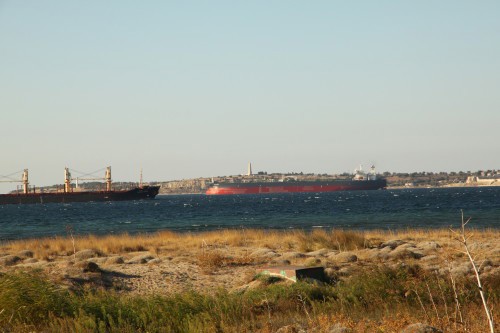
20. Kum Kale to Helles view
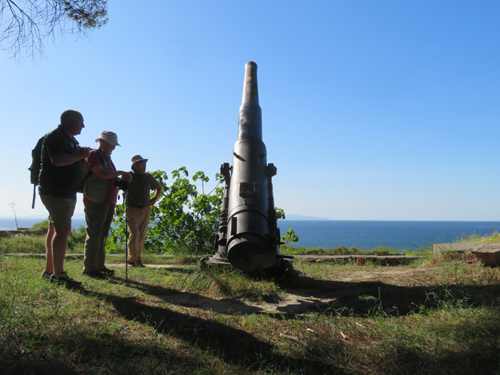
21. Group at Fort Orkanie
Taking part in this segment of the Hidden Gallipoli tour was Clive Harris himself, who gave an insightful account of the dramatic actions of Lieutenant Commander Eric Robinson VC and his naval demolition party at Kum Kale and Orkanieh. The latter is a gun battery position between Kum Kale and Yeni Sher.
Wednesday 11 May, started off with a completely new feature to visit: the recently restored Bigalı fortified coastal battery. This has only just opened as a museum to display its function during the 1915 campaign, as the main 3rd Corps Rifle Repair Workshop. Situated five minutes along the Eceabat-Gelibolu road, we were given an introductory tour by the Museum’s Director, Ms Aslıhan Kervan, who explained that the restoration was made as faithful as possible using old plans, photos, documents and tools. In July 1915, General Essad Paşa consolidated all Turkish rifle workshops here under one roof and armourers repaired some 90,000 rifles during the campaign. Following repair, each rifle had to be test-fired on the adjacent range. This has been recreated to allow visitors to (electronically) fire a replica Mauser at targets on a screen: very interesting exhibition and a great deal of fun to boot!
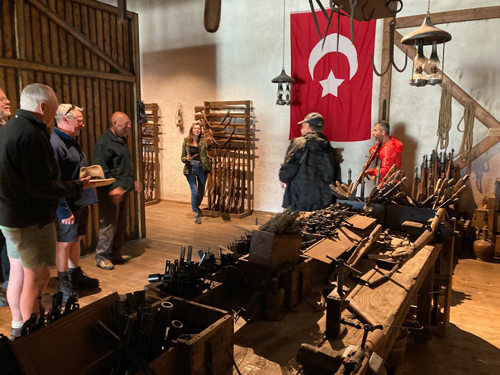
22. Rifle Repair workshop at Bigalı
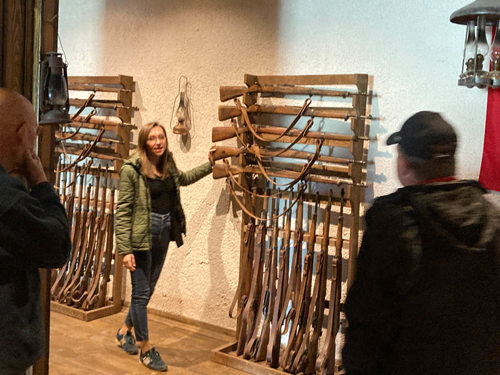
23. Explaining the process
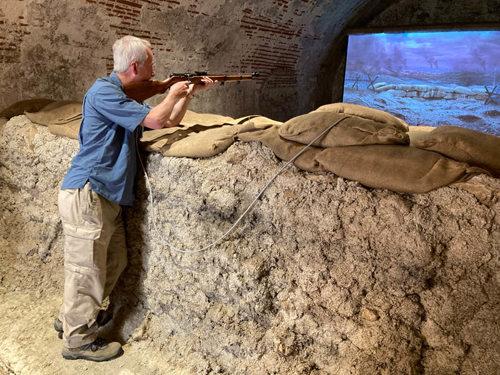
25. “Test firing”
Onto the Anzac Sector next, where we trod the newly-opened pathway from Shrapnel Valley to Russell’s Top. This, the work of the Gallipoli Site Directorate, enables us to walk in relative ease from the Anzac rear areas up to firing lines and the newly-cleared trenches. Then, descending by coach, we joined up with the regular tour group to partake in the traditional gözleme lunch.
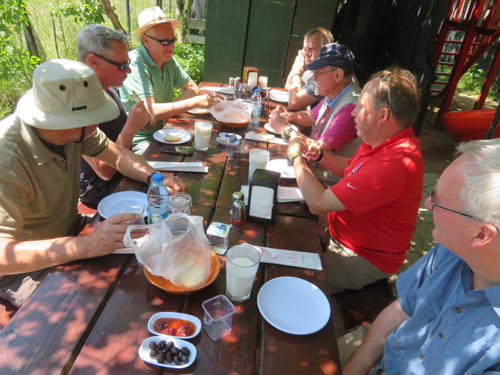
26. Gözleme lunch
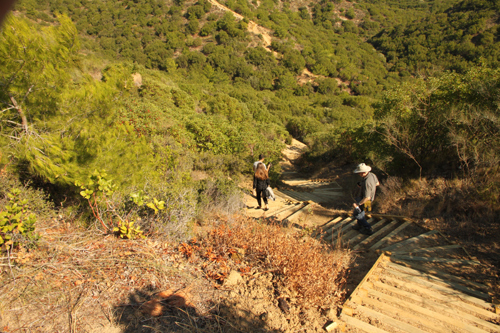
27. Stairway en route to Russell’s Top
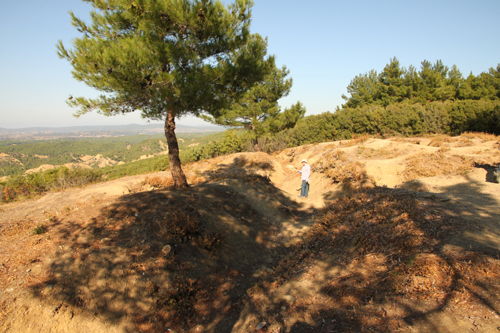
28. A cleared trench
Next, on to the Hill 60 Walk, starting at the cemetery and covering the perimeter of the Hill 60 sector. This provided us with a far greater understanding of the topography and nature of the fighting in this sector. With names like West Ham Gully, Carisbrooke Castle, Upton Park and the Broadway, these locations provide evidence of the 54th (East Anglian) Division troops, who held this area through the autumn of 1915.
The weather on our last Peninsula day, Thursday 12 May was forecast as a scorcher, so it was decided to switch the afternoon’s programme to the morning. Our first stop was Hill 10 Cemetery and the adjacent Newfoundland Regiment Memorial. This latter is a new addition to the Gallipoli landscape in the form of a splendid statue of a caribou. From there we proceeded to the recently refurbished Kireçtepe Jandarma Memorial, commemorating the Gelibolu and Bursa Jandarma Battalions, which were responsible for halting the advance following the Suvla landing.
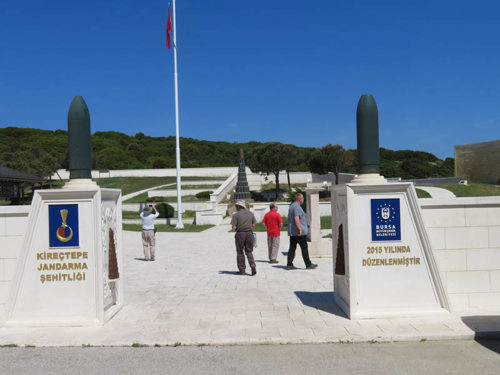
29. Jandarma memorial
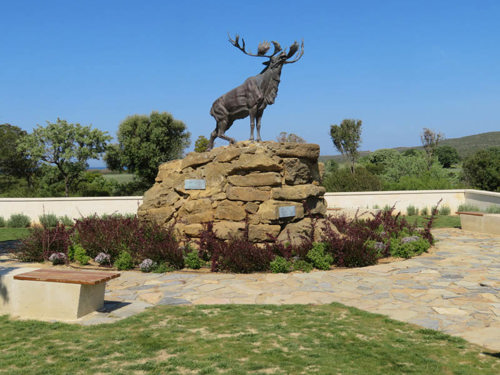
30. The new Caribou memorial
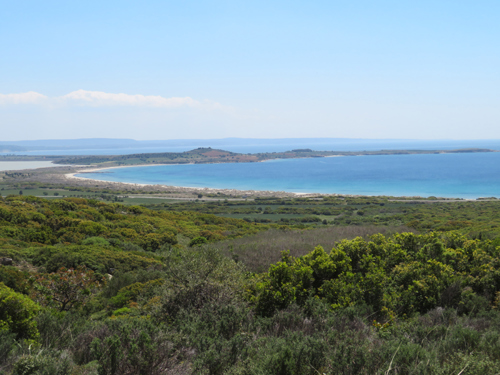
31. View from Kiretch Tepe
A dramatic walk along Kiretch Tepe Sirte was intended to be next, however access to the ridge itself was denied us due to this year's vigorous growth of impassable scrub and brush. We did manage however, to view the surrounding areas of Kidney Hill, the Pimple and Jephson's Post, before descending to the road and taking our coach to Özay Gundoğan’s private museum and rest-stop at Büyük Anafarta. There we had our packed lunch and viewed the exhibits.
After lunch we drove to the Turkish monument at Scimitar Hill, but before proceeding on from there, the Director of the Gallipoli Historic Site, Mr Ismail Kaşdemir, stopped by to welcome us. After a chat, he kindly presented the group with red caps and miniature replicas of the 'Gallipoli Star' (properly called the Harp Madalyası). Following a group photo with Mr Kaşdemir, we walked on to the W Hills. There we had an in-depth study of the August Offensive, including the assaults by both the 29th and the Mounted Divisions, as well as a close-up view of the Turkish positions on the W Hills. That closed the day and we departed for Kilidbahr and the ferry back to Çanakkale.
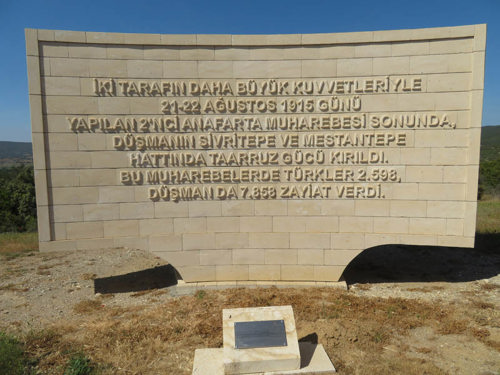
32. Monument at Scimitar Hill
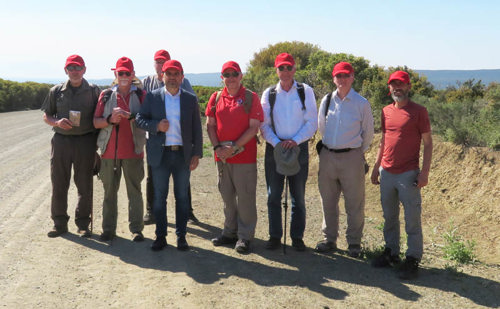
33. The “Red Caps” with Mr Kaşdemir
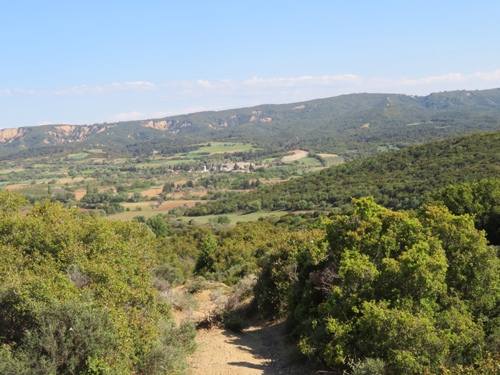
34. W Hills
Friday, 13 May, saw us depart the battlefield over the new 1915 Çanakkale Bridge, en route to Istanbul. Practically all 22 members signed up for the add-on programme, which began with our checking into the Marmara Pera Hotel, close to Istanbul's bustling Istiklal pedestrian precinct and Taksim Square. We then crossed the Bosporus to the Asian side and the fascinating Haidar Pasha Cemetery. This CWGC cemetery contains burials and memorials from the Crimean war, PoWs of the Gallipoli campaign, the allied intervention in revolutionary Russia, and even WWII. Whilst we were grouped around the impressive Crimean War Memorial, Stephen described the role played here by Florence Nightingale.
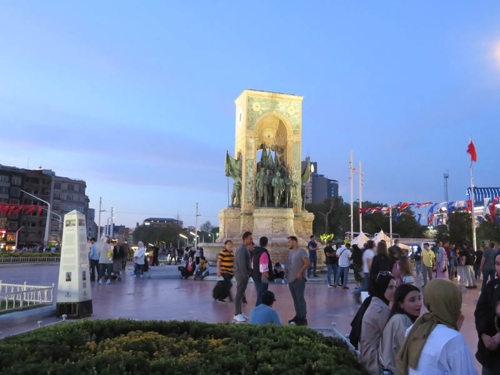
35. Taksim Square memorial
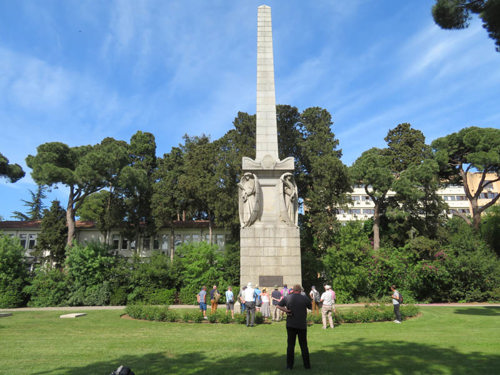
36. The Nightingale monument
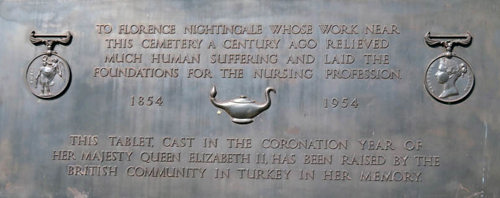
37. Dedication to Florence Nightingale
The tour’s final day, 14 May, began with a visit to the Istanbul Army Museum, which charts the history of the Ottoman and Turkish Army over the last 1,000 years. The First World War and Dardanelles galleries were our main focus. In the garden was a Krupp fortress gun and the figure of Corporal Seyit, who became a national hero, because he hefted artillery shells to the gun, when the hoist was out of action.
Then, by special invitation, we visited the German War Cemetery and Commemoration Centre in Tarabya, a suburb to the north of Istanbul. Overlooking the Bosporus, the cemetery is laid out in the shape of a ship’s bow, and lies in the beautiful park gardens of the German Ambassador’s summer residence. A sitting room in this building is where the historical Treaty of Alliance between Imperial Germany and the Ottoman Empire was signed on 2 August 1914. Our guide was GA member, Colonel Klaus Wolf, also author of “Victory at Gallipoli 1915”.
Colonel Wolf was a lead figure in setting up the Gallipoli Commemoration Centre here to provide an accurate picture of the German participation in the Gallipoli campaign. Almost all the graves date from the Gallipoli campaign itself and include the crew of UB-46, sunk in the Black Sea. Klaus also took us to the graves of famous personalities like Field Marshal von der Goltz, Baron von Wangenheim (who, as the then German Ambassador, signed the Treaty with the Ottoman Empire) and told us of the visit by the Kaiser in 1917, who thought the sculpture to the fallen soldiers was not “martial” enough.
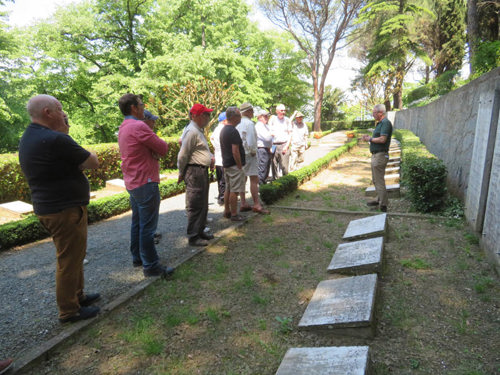
38. Klaus Wolf briefing the group
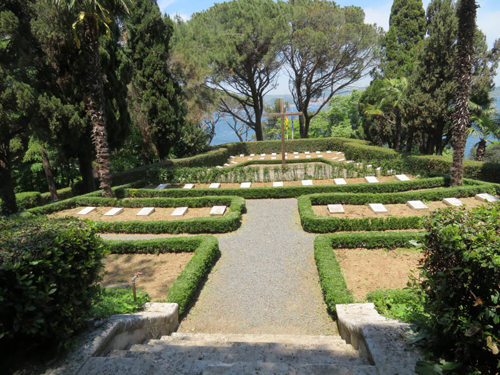
39. Tarabya cemetery mid-section
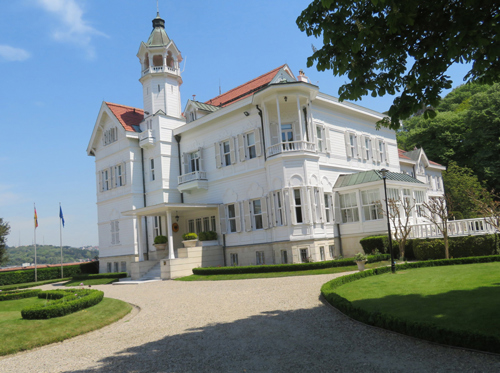
40. The Ambassador’s residence
After lunch on the shores of the Bosporus, we said our goodbyes and transferred to Istanbul Airport for the return flight. An impressive week, which will not be quickly forgotten, nor the new friends we made on this tour.
“One of the best ever” is an understatement!
Enjoyed reading this? If you would like to join a future tour, please let us know by emailing [email protected] for updates on our tour(s) planned for 2023.
--
Thomas Iredale
Overseas Officer and Trustee
The Gallipoli Association
